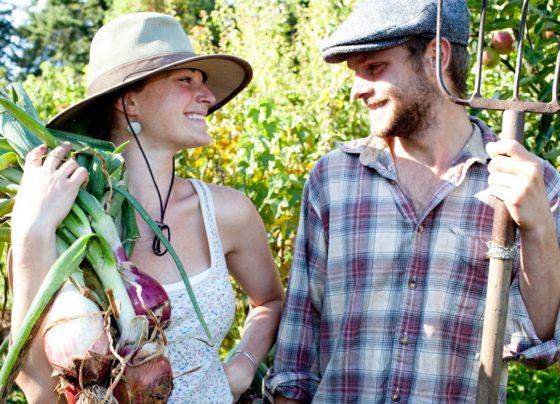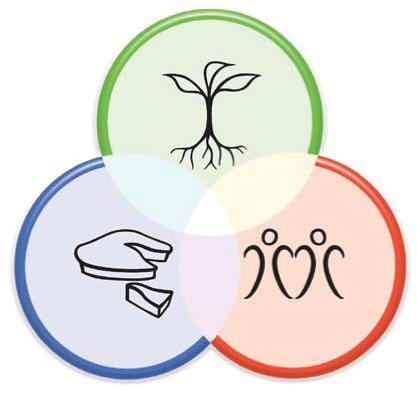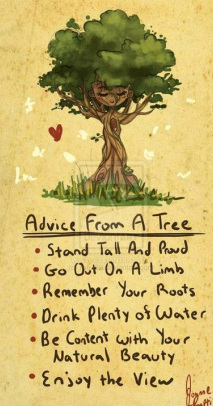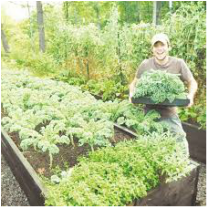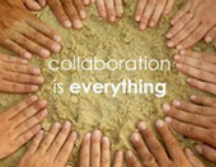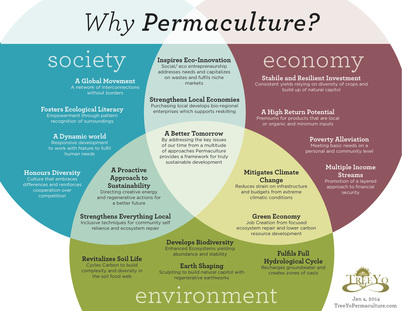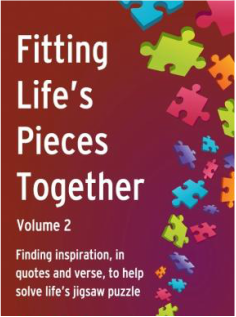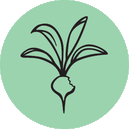Permaculture
the Art & Science of Designing in
Harmony with Nature
Harmony with Nature
Permaculture is a design art and science that sees nature as our essential teacher. Based on three ethics and 12 principles it takes a "systemic view" of the situations and circumstances of life. The understanding of "interrelationships" , the true meaning of ecology, is fundamental to permaculture. Originally applied to the notion pf "permanent agriculture" when it was first articulated as an integrated way of working with nature in the 1970's in Australia, its applicability to a wide range of human activities is now apparent.
Ethics
The ethics earth care, people care and fair share form the foundation for permaculture design and are also found in most traditional societies.val.
Ethics are culturally evolved mechanisms that regulate self-interest, giving us a better understanding of good and bad outcomes. The greater the power of humans, the more critical ethics become for long-term cultural and biological survival.
Permaculture ethics are distilled from research into community ethics, learning from cultures that have existed in relative balance with their environment for much longer than more recent civilizations. This does not mean that we should ignore the great teachings of modern times, but in the transition to a sustainable future, we need to consider values and concepts outside the current social norm.
Resolution of the Elders Circle
Resolution of the Elders Circle
Earth Care
The Earth is a living, breathing entity. Without ongoing care and nurturing there will be consequences too big to ignore.The icon of the young plant represents organic growth, a key ingredient in sustaining life on Earth.Earth Care can be taken to mean caring for the living soil. The state of the soil is often the best measure for the health and well-being of society. There are many different techniques for looking after soil, but the easiest method to tell if soil is healthy is to see how much life exists there.
Our forests and rivers are the lungs and veins of our planet, that help the Earth live and breathe, supporting many diverse life forms. All life forms have their own intrinsic value, and need to be respected for the functions that they perform – even if we don’t see them as useful to our needs.By reducing our consumption of ‘stuff’, we reduce our impact on the environment, which is the best way to care for all living things.
Our forests and rivers are the lungs and veins of our planet, that help the Earth live and breathe, supporting many diverse life forms. All life forms have their own intrinsic value, and need to be respected for the functions that they perform – even if we don’t see them as useful to our needs.By reducing our consumption of ‘stuff’, we reduce our impact on the environment, which is the best way to care for all living things.
People Care
If people’s needs are met in compassionate and simple ways, the environment surrounding them will prosper.The icon of the two people together, represents the need for companionship and collaborative efforts to affect change.
People Care begins with ourselves and expands to include our families, neighbors and wider communities. The challenge is to grow through self-reliance and personal responsibility. Self-reliance becomes more feasible when we focus on non-material well-being, taking care of ourselves and others without producing or consuming unnecessary material resources.
By accepting personal responsibility for our situation as far as possible, rather than blaming others, we empower ourselves. If we can recognize that a greater wisdom lies within a group of people, we can work with others to bring about the best outcomes for all involved.
The permaculture approach is to focus on the positives, the opportunities that exist rather than the obstacles, even in the most desperate situations.
People Care begins with ourselves and expands to include our families, neighbors and wider communities. The challenge is to grow through self-reliance and personal responsibility. Self-reliance becomes more feasible when we focus on non-material well-being, taking care of ourselves and others without producing or consuming unnecessary material resources.
By accepting personal responsibility for our situation as far as possible, rather than blaming others, we empower ourselves. If we can recognize that a greater wisdom lies within a group of people, we can work with others to bring about the best outcomes for all involved.
The permaculture approach is to focus on the positives, the opportunities that exist rather than the obstacles, even in the most desperate situations.
Fair Share
We are provided with times of abundance which enables us to share with others.The icon of the pie and a slice of it represents the taking of what we need and sharing what we don’t whilst recognising that there are limits to how much we can give and how much we can take.
Established fruiting trees are likely to produce more than one person can eat. It takes time to pick and preserve the harvest, and there are limits to how much fruit we can use. There are many ways that we benefit from giving a fair share of the bounty to others in our community.
The growth in human consumption and the accelerating extinction of species make clear the impossibility of continuous growth. Sometimes we need to make hard decisions and consider what enough is.
We need to focus on what is appropriate for us to do, rather than what others should do. By finding the right balance in our own lives we provide positive examples for others, so that they can find their own balance.
Established fruiting trees are likely to produce more than one person can eat. It takes time to pick and preserve the harvest, and there are limits to how much fruit we can use. There are many ways that we benefit from giving a fair share of the bounty to others in our community.
The growth in human consumption and the accelerating extinction of species make clear the impossibility of continuous growth. Sometimes we need to make hard decisions and consider what enough is.
We need to focus on what is appropriate for us to do, rather than what others should do. By finding the right balance in our own lives we provide positive examples for others, so that they can find their own balance.
Permaculture is a creative design process based on whole-systems thinking informed by ethics and design principles that feature on this site. This approach guides us to mimic the patterns and relationships we can find in nature and can be applied to all aspects of human habitation, from agriculture to ecological building, from appropriate technology to education and even economics.
By adopting the ethics and applying these principles in our daily life we can make the transition from being dependent consumers to becoming responsible producers. This journey builds skills and resilience at home and in our local communities that will help us prepare for an uncertain future with less available energy. The techniques and strategies used to apply these principles vary widely depending on the location, climatic conditions and resources that are available. The methods may differ, but the foundations to this holistic approach remain constant. By learning these principles you can acquire valuable thinking tools that help you become more resilient in an era of change.
You can begin by exploring the website this page draws heavily from , (http://permacultureprinciples.com/ ) focusing on an area of interest or step-by-step by clicking on the bike icon to discover examples of how permaculture can be applied and the thinking behind the concept.
By adopting the ethics and applying these principles in our daily life we can make the transition from being dependent consumers to becoming responsible producers. This journey builds skills and resilience at home and in our local communities that will help us prepare for an uncertain future with less available energy. The techniques and strategies used to apply these principles vary widely depending on the location, climatic conditions and resources that are available. The methods may differ, but the foundations to this holistic approach remain constant. By learning these principles you can acquire valuable thinking tools that help you become more resilient in an era of change.
You can begin by exploring the website this page draws heavily from , (http://permacultureprinciples.com/ ) focusing on an area of interest or step-by-step by clicking on the bike icon to discover examples of how permaculture can be applied and the thinking behind the concept.
12 Design Principles
Thinking tools, that when used together, allow us to creatively re-design our environment and our behavior in a world
of less energy and resources
of less energy and resources
Principle 1: Observe & Interact
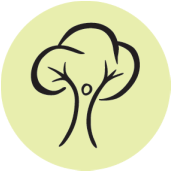
By taking the time to engage with nature we can design solutions that suit our particular situation.This icon for this design principle represents a person ‘becoming’ a tree. In observing nature it is important to take different perspectives to help understand what is going on with the various elements in the system. The proverb “Beauty is in the eye of the beholder” reminds us that we place our own values on what we observe, yet in nature, there is no right or wrong, only different
Principle 2: Catch & Store Energy

By developing systems that collect resources when they are abundant, we can use them in times of need. This icon for this design principle represents energy being stored in a container for use later on, while the proverb “make hay while the sun shines” reminds us that we have a limited time to catch and store energy.
Principle 3: Obtain a Yield
|
Ensure that you are getting truly useful rewards as part of the work that you are doing. The icon of this design principle, a vegetable with a bite out of it, shows us that there is an element of competition in obtaining a yield, whilst the proverb “You can’t work on an empty stomach” reminds us that we must get immediate rewards to sustain us.
|
Principle 4: Apply Self-Regulation & Accept Feedback
|
We need to discourage inappropriate activity to ensure that systems can continue to function well. The icon of the whole earth is the largest scale example we have of a self regulating ‘organism’ which is subject to feedback controls, like global warming. The proverb “the sins of the fathers are visited unto the children of the seventh generation” reminds us that negative feedback is often slow to e
|
Principle 5: Use & value renewable resources & services

Make the best use of nature’s abundance to reduce our consumptive behavior and dependence on non-renewable resources. The horse icon represents both a renewable service and renewable resource. It can be used to pull a cart, plow or log and it can even be eaten – a non consuming use is preferred over a consuming one. The proverb “let nature take it’s course” reminds us that control over nature through excessive resource use and high technology is not only expensive, but can have a negative effect on our environment.
Principle 6:
Page still under Development

